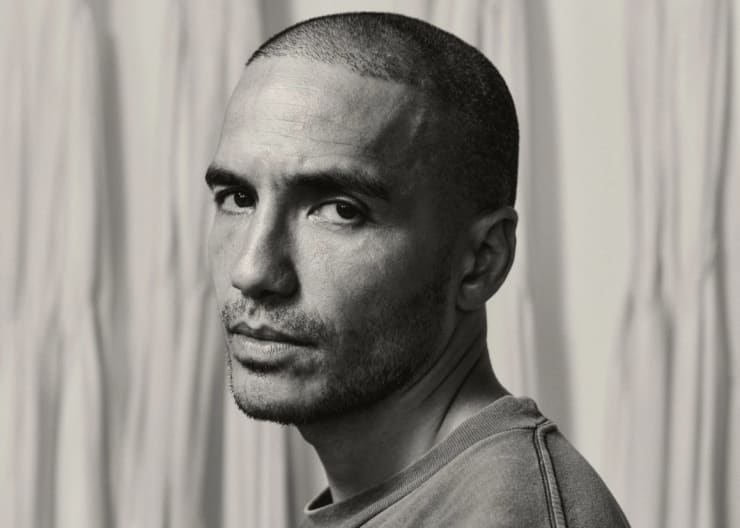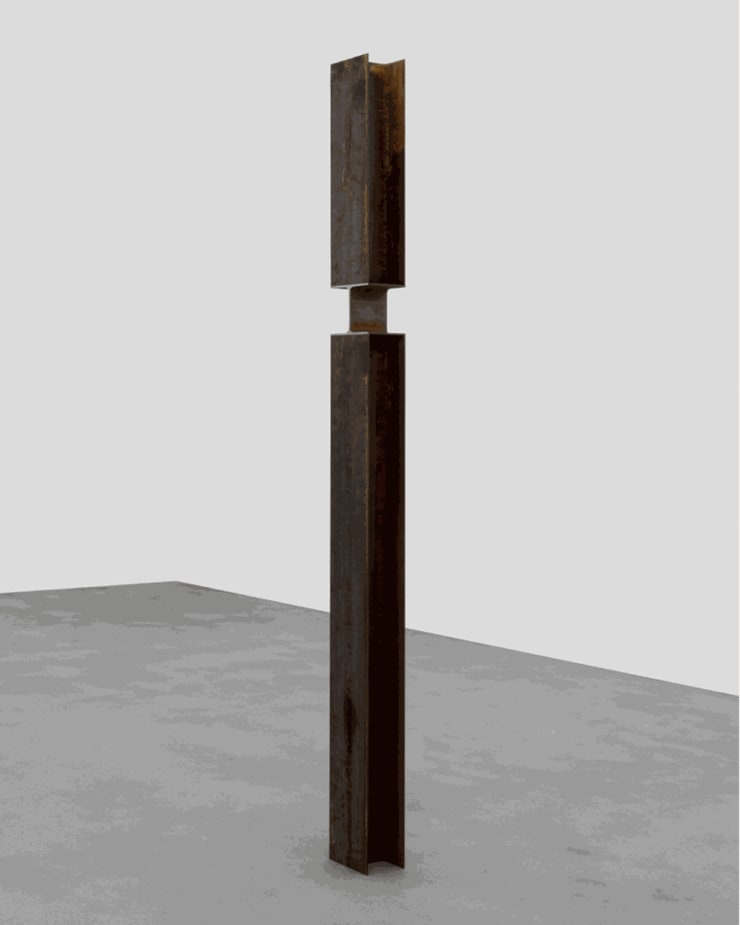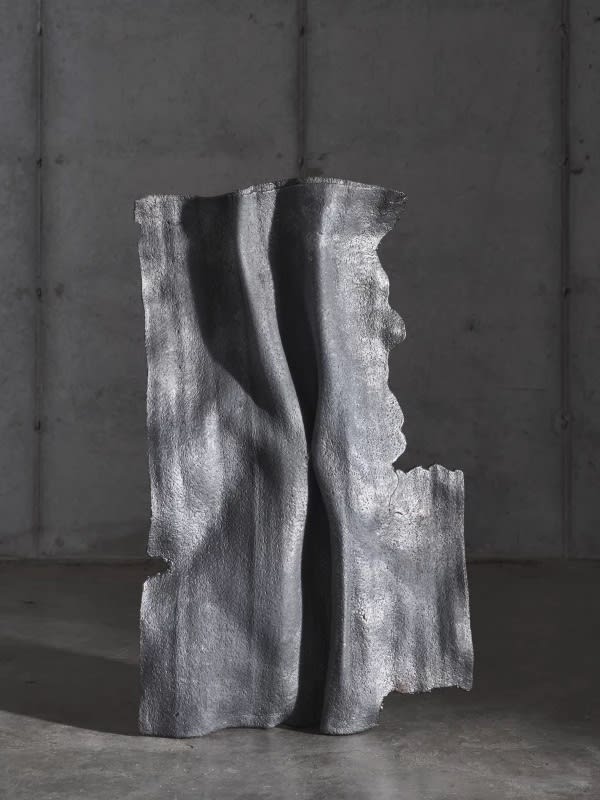When Eli Ping was growing up in Chicago, Illinois in the 1980s and 90s, the city was a well-known hub for architectural innovation. “Bauhaus architecture was very prominent,” he says, referencing the city’s history and preoccupation with modernists like Mies van der Rohe, a German-born architect who solidified his design language in and around Chicago after settling there in the 1940s. Thinking back, Ping actually considers the city of his youth “incredibly bleak,” he says, but also recognizes how its built landscape of spare, geometrically rendered structures and towering skyscrapers still managed to seep into his consciousness, crediting his “interest in minimalism with that bleakness of Chicago.”
Chicago’s influence is particularly evident in Post, his first of three pieces acquired by Celine. Ping made the piece using a steel I-beam – “the core symbol of modern architecture,” he says. For Post, Ping removed a segment from the beam and rotated it 90 degrees, making the upper portion look like it’s being supported by a narrow plate. In a way, Post combines a core symbol of architecture with what he says is a core concern of sculpture: “How to make heavy things appear like they’re floating.”
Ping considers the piece “a bit of an outlier in my practice,” he says. “Usually my work is more bodily and organic.” The other two of Celine’s acquisitions are from his “Monocarp” series, which he created by hanging weighted pieces of fabric from the ceiling, reinforcing the tension between the two points. He then slit the cotton of each piece and folded it onto itself in various ways before covering the sculptures in resin to have them stay in shape.
"I have to feel like a single force is moving through that artwork – without interruption.” (Eli Ping)
These freestanding pieces take on an explosive energy that stretches from the floor to a single point above.
“For my work to express what I want from it, or for me to recognize myself in it,” Ping states, “I have to feel like a single force is moving through that artwork – without interruption.”
The shift in Ping’s engagement with minimal forms, from architectural to “anthropomorphic or organic,” as he calls it, is a sign of how much more he trusts himself as an artist – and can lean into his natural instincts about artmaking in general.
Ping remembers once seeing a work by Paul Gauguin at The Art Institute of Chicago when he was younger. “I saw the places in the piece where the different fields of color encountered each other, and how he fought for the contours of his forms,” Ping says. “And I could see that there were days, weeks, hours, months – and hundreds, possibly thousands, of decisions – just in one area of the painting.”
He instantly understood the methods Gauguin had to use to engineer that work.
“As I’ve matured as an artist, I’ve moved from working from my intellect to working from that interior, intuitive and visceral place,” he says. And he wants his practice to reflect that growth. “The final form of the piece should not evince a lot of deliberation,” he says. “It should appear as if the thing happened all at once.”
For further information, please visit the website:
https://www.celine.com/en-qa/celine-maison-de-couture/celine-art-project/art_in_store_eli_ping_24/




